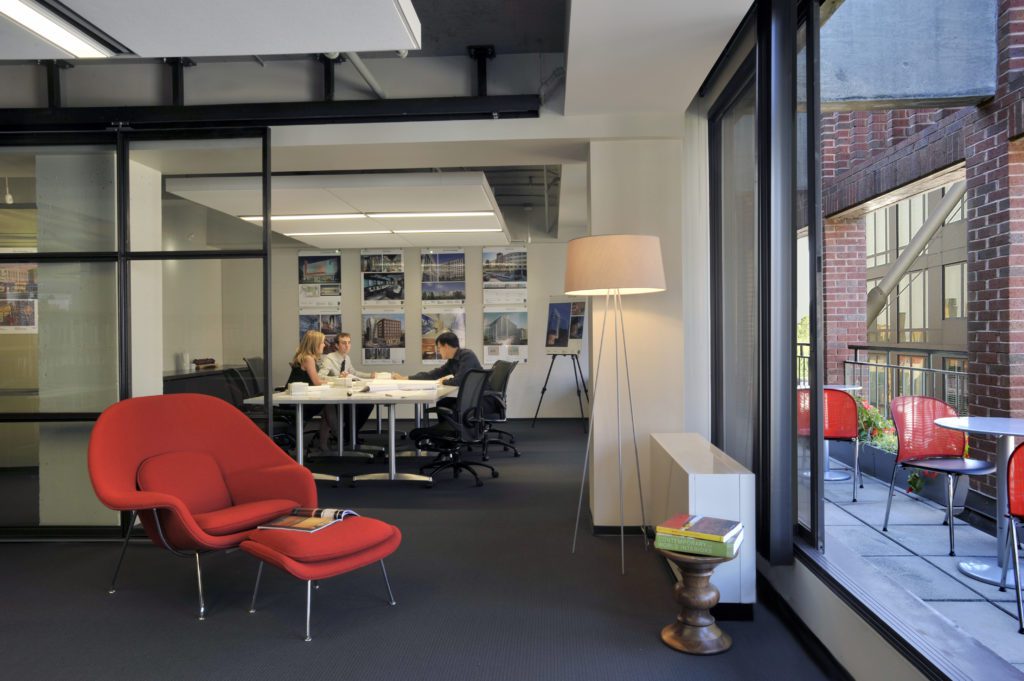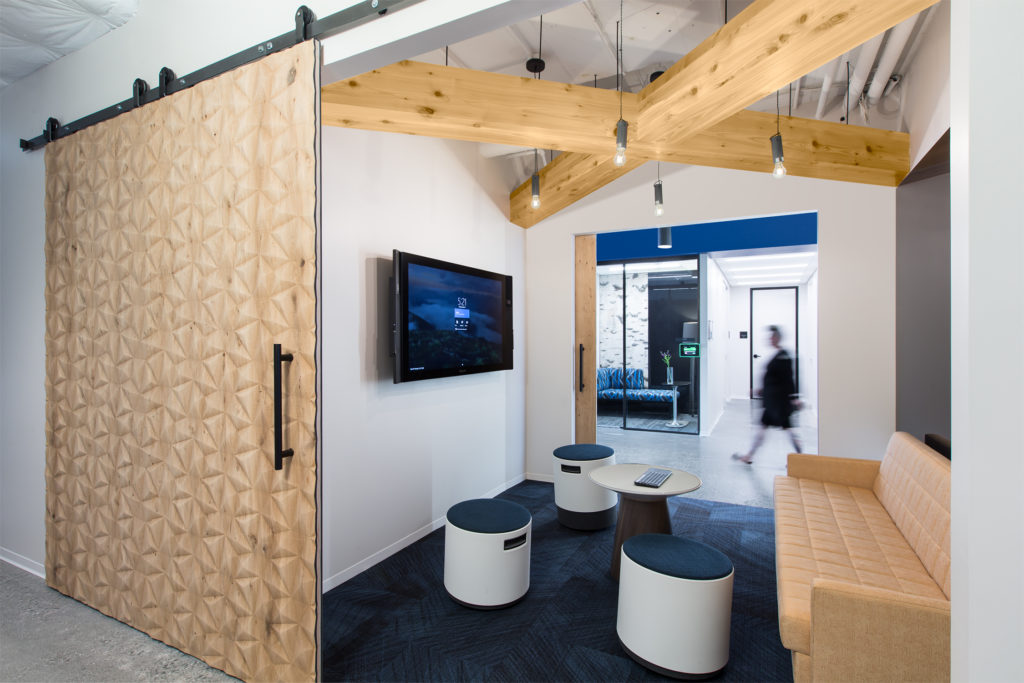Cool Spaces
By • January 30, 2020 0 3893
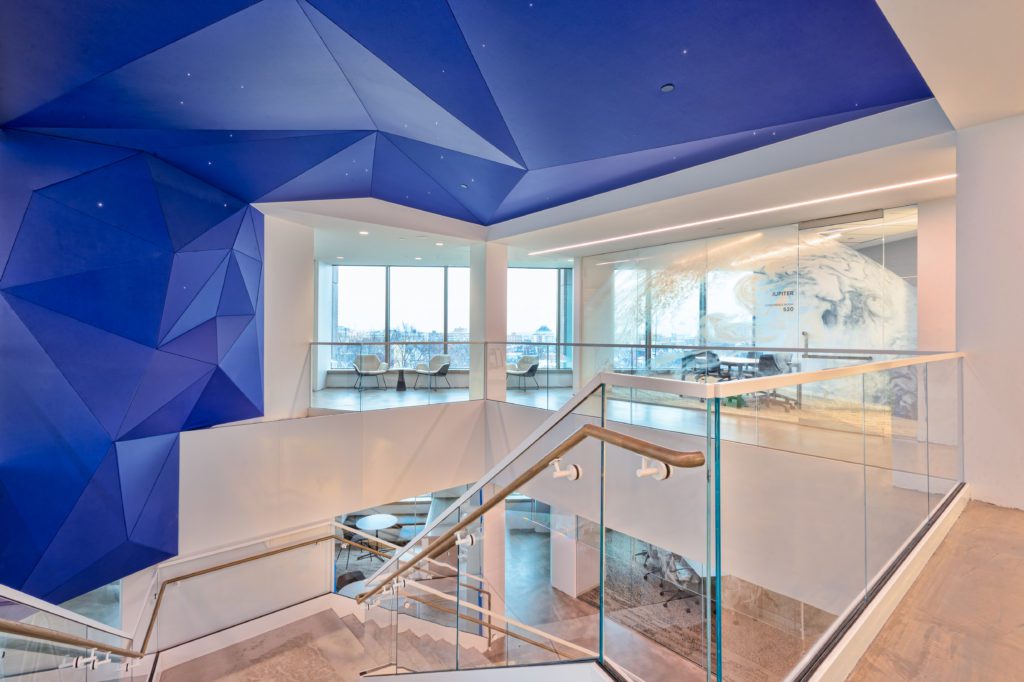
The traditional office is getting a makeover. Gone are the cube farms, walled-in offices and rigid hierarchies. Today’s workspace embraces collaboration, wellness, sustainability and all the comforts of home.
Almost a century ago, architect and Memphis Group founder Ettore Sottsass declared, “If you have good design, you will have a better society.” Architects and designers are now doing their part to build a better society in the workplace, applying a human-centered approach that makes the office environment a more comfortable, productive and satisfying place to be.
We asked leading D.C.-based architects and designers for their thoughts — what’s driving this new corporate aesthetic, what’s trending and just what does “resimercial” mean, anyway?
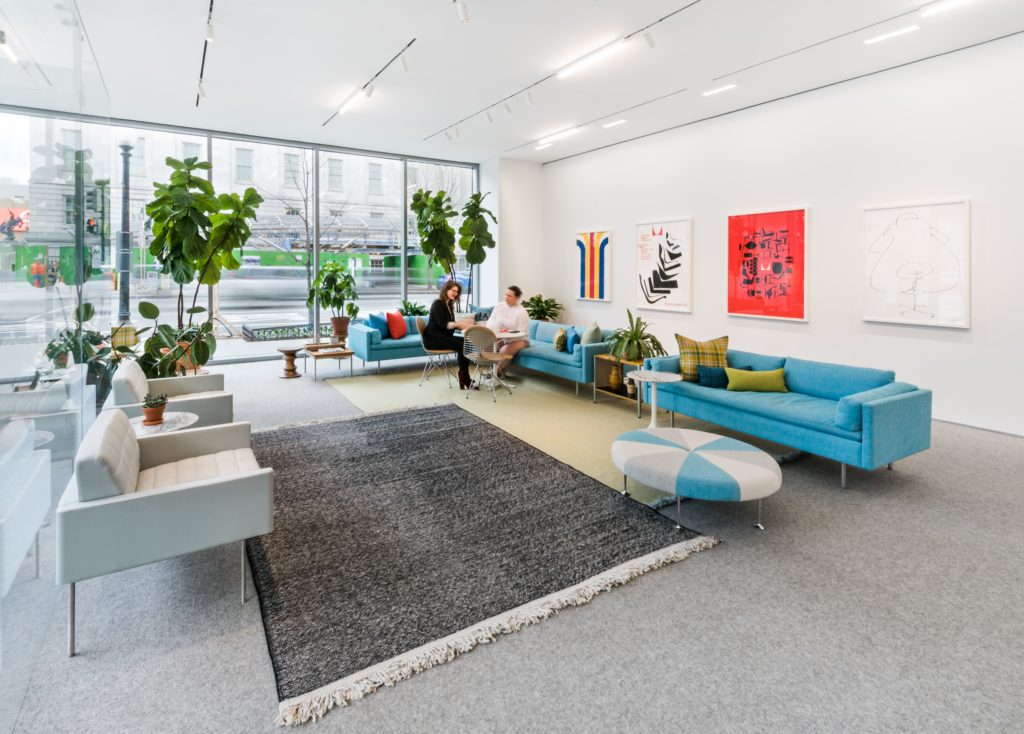
HermanMiller’s Living Office would feel totally at home in your living room and offers a more natural and desirable experience of work._Credit-Erin Kelleher Photography.
HUMAN-CENTERED DESIGN
Herman Miller’s “living office” puts the firm’s iconic furnishings, modular office systems and other tools to work in a holistic and personalized way. From sit-to-stand desks to sleek storage solutions and seating arrangements that lend themselves to multiple configurations, the overarching goal of Herman Miller’s design philosophy is to improve the human experience: “No matter what you do, you need a place to sit and surface to work on. In a living office, you have everything you need to get the job done in a setting that brings out your best.”
Other firms like FOX Architects would agree. “When you give people what they need to perform at their best and support their well-being, you have happy, healthy people,” according to FOX.
And what else makes people happy? For many, working at home would top the list. Architects are adapting the look and feel of residential design and the hospitality industry to bring a more homelike atmosphere to the commercial space. Hence the term: “resimercial.” Look for more “soft goods,” brighter colors and high-design elements that inspire and delight.
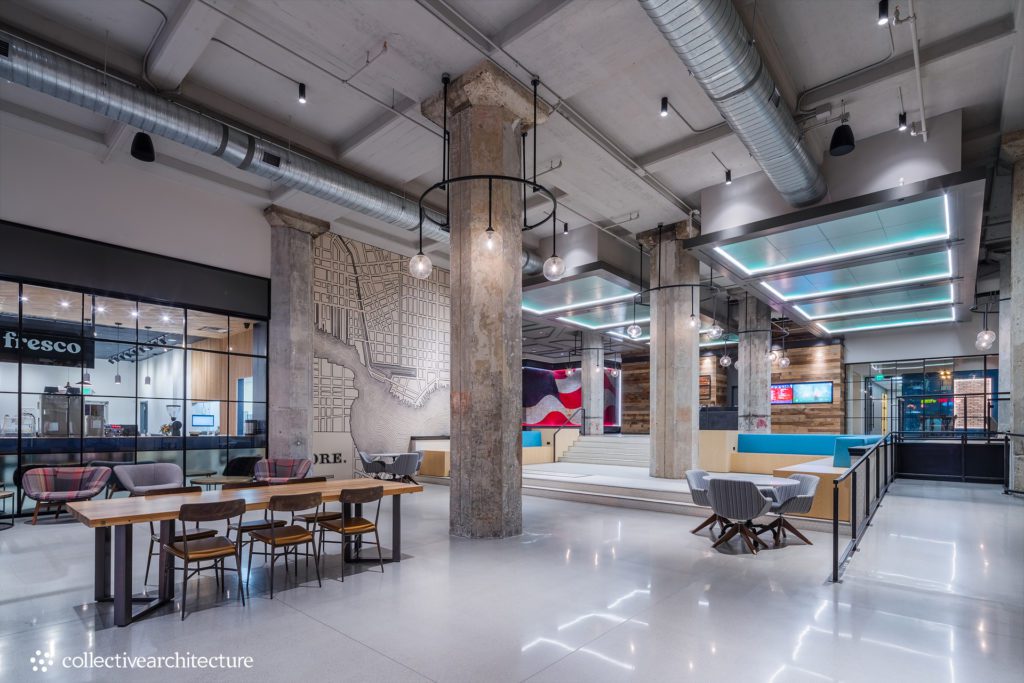
For Candler, Collective reimagined 70,000 SF of public space into an historically inspired interior. Courtesy Max Kun Shang, Iris Photography.
FLEXIBLE SPACES
The best seat in the house may no longer reside in a large corner office. It may sit at a communal table or nestle in a more private, specialized area, like a stylized telephone booth or cocoon-like sofa.
To accommodate a more informal, co-working vibe, designers are now turning away from the conventionally siloed office layouts, offering a variety of social, agile options like shared spaces to spark innovation, relationship building, and creativity. So goodbye, assigned seating and inefficient, single-function rooms. Hello, hoteling (sit where you wish, when you wish), privacy on demand and an emphasis on caring, sharing and collaboration.
Another benefit: an open plan encourages people to move around. Whether they’re intentionally counting steps or conversing with colleagues, it gets the blood and ideas flowing. It establishes a barrier-free and inclusive workplace (think: Gallaudet’s DeafSpace project) where all employees can thrive and enjoy a sense of belonging.
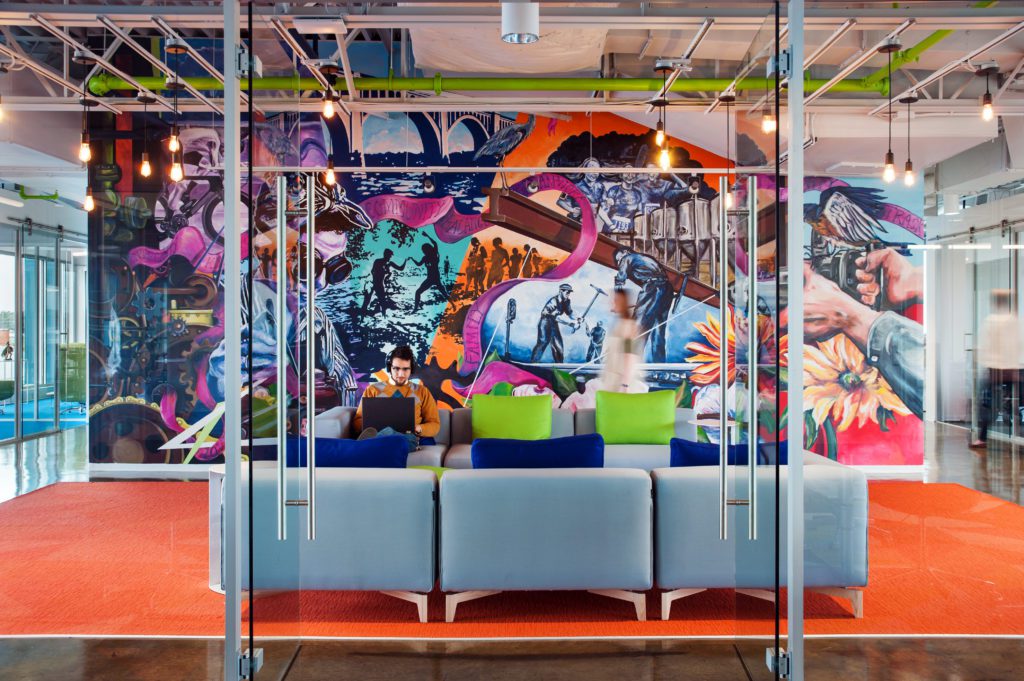
At Dominion Payroll Services, Hickok Cole transformed a dark, closed-off interior into an inviting space. Courtesy Ansel Olson.
SUSTAINABILITY AND WELLNESS
With LEED and the newer WELL certifications in force, protecting health and wellness for the planet and its people, sustainability has become the go-to standard for design.
Collective Architecture is “taking sustainability to the next step by carefully studying materials and crafting strategies that focus on the well-being of employees in a space.”
Hickok Cole is also looking ahead to what’s next on the sustainability front, and that includes climate change. “We look for measurable ways to make a space healthier and implement best practices in material selection and construction,” says the firm. “Everything we do focuses on how to enable companies to support their mission as well as their employees’ health, safety, and welfare.”
What to look for: more mass timber construction than high-carbon-footprint concrete or steel. More recycled materials and less plastic. Energy-saving smart glass that boosts exposure to healthy natural light. Even secluded spaces for lockdown rooms, meditation, exercise or power naps(!).

For IT firm Splunk, FORM created a variety of nature-inspired vignettes to keep employees inspired and energize. Courtesy Spielman Studio.
TALENT AND CULTURE
The world turns on talent — recruiting it, retaining it, rewarding it. And, unsurprisingly, design plays an important role in attracting the best. Notes FORM Architects: “In a tight labor market, your office design can be a differential. Younger people have different expectations and values. And your space must be sensitive to that.”
Gensler’s Jordan McGee would agree. “Design has the power to change the world. And good design leads to better performance, greater productivity and, importantly, results in greater talent retention and loyalty,” she says.
Apparently, in the new work zone, design is more than décor. It can be a deal-breaker.
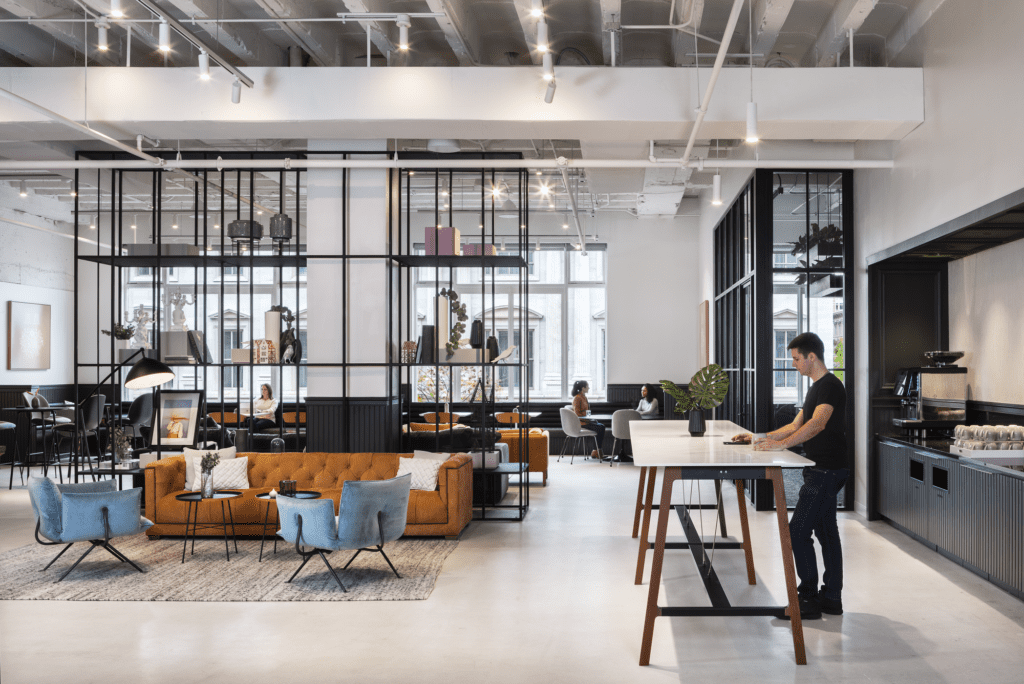
FOX gave a rich and refined look to Convene, a high-end workspace that aspires to be the Four Seasons of co-working. Courtesy Ron Blunt.
- Hickcok Cole’s office in Georgetown is a case study in openness, elegance and access to nature. Courtesy Hickok Cole.
- FORM gave Accenture’s CyberFusion Center a workspace that a cool blue vibes that balances security and privacy. Courtesy Spielman Studio
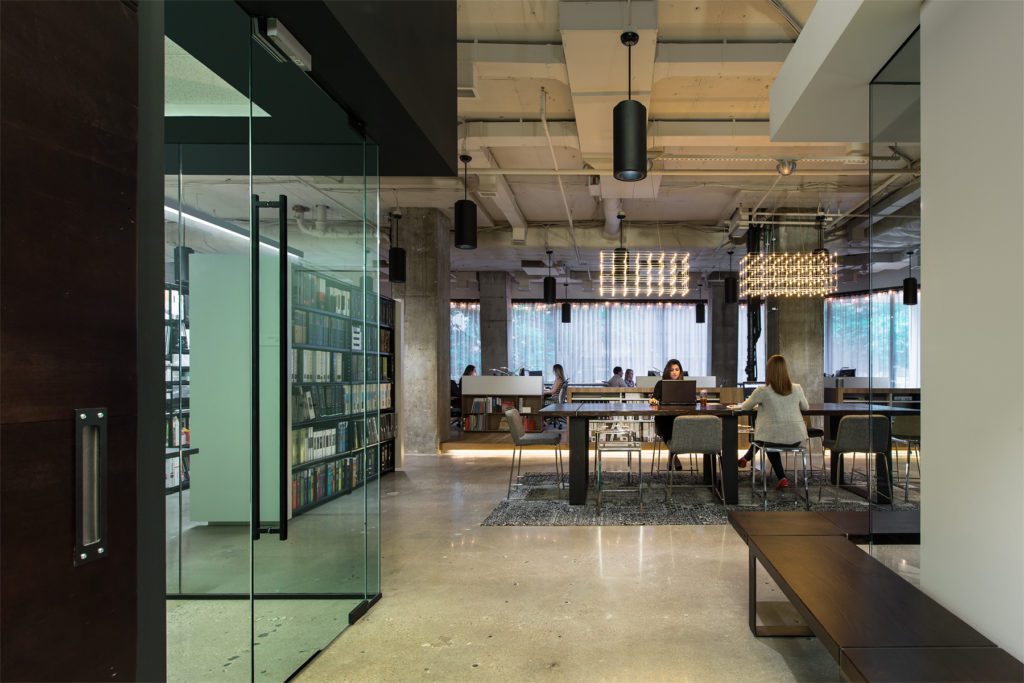
The raw industrial design in FORM’s own office reflects its commitment to sustainability. Courtesy Spielman Studio.

